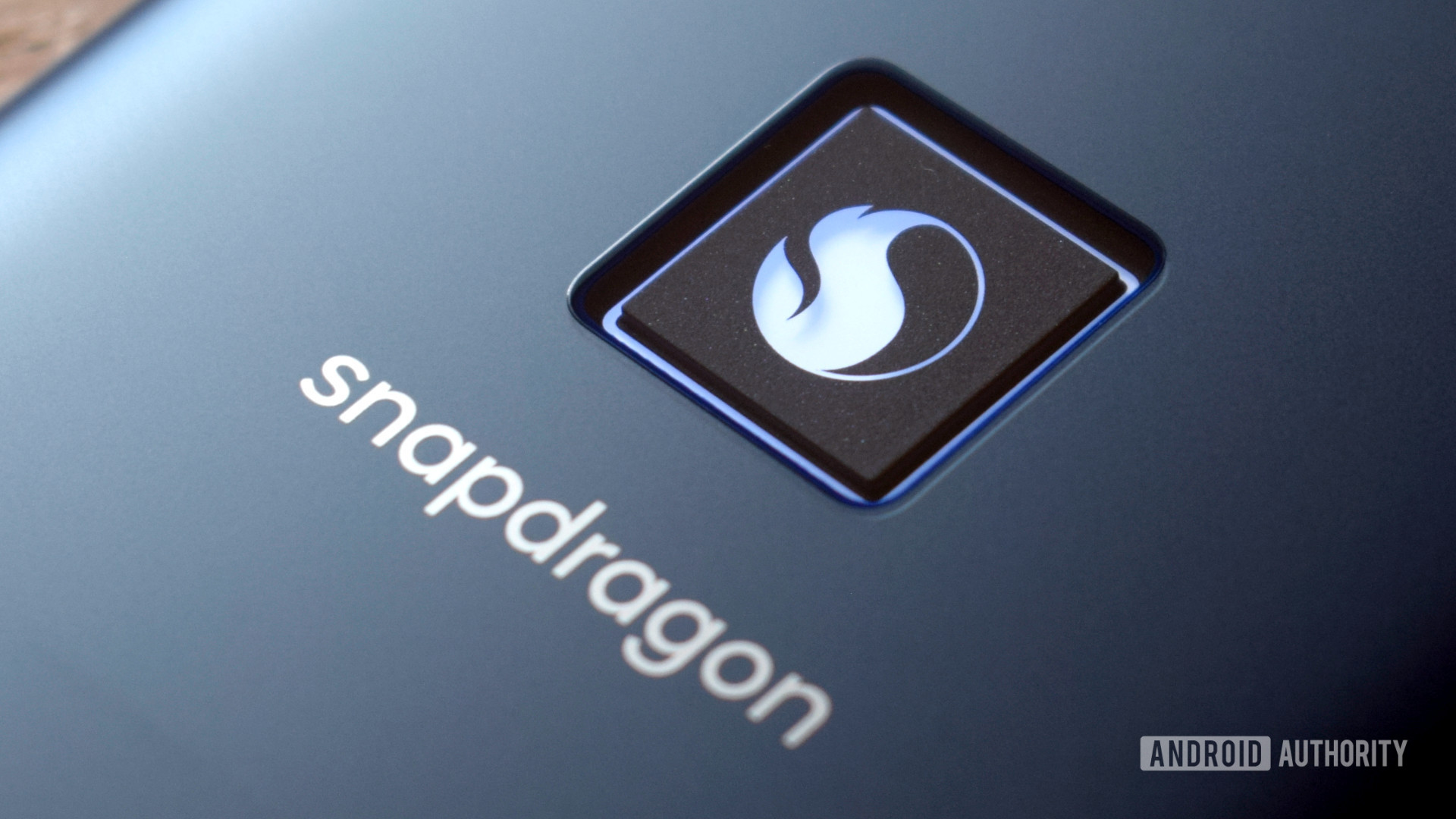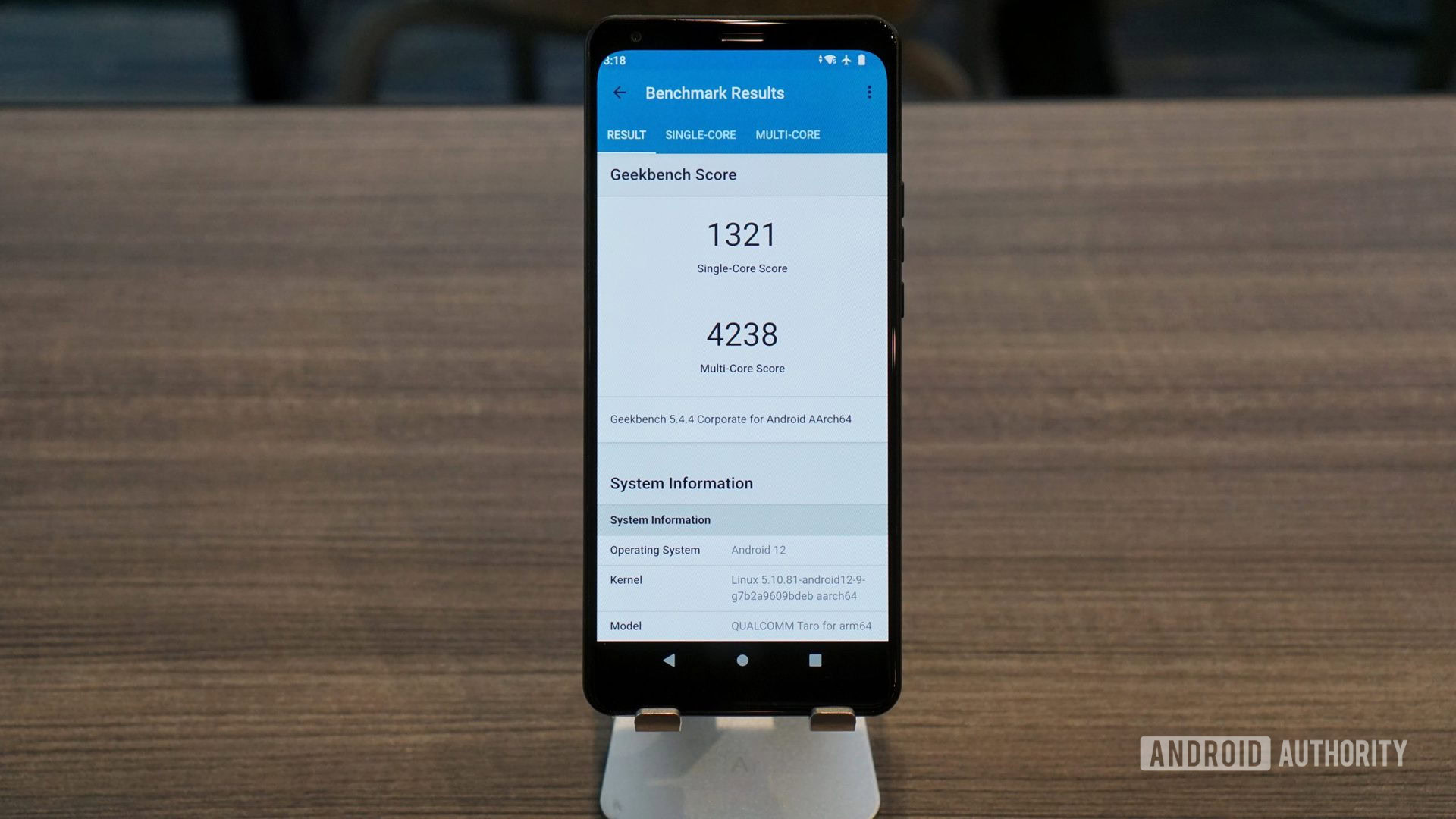Affiliate links on Android Authority may earn us a commission. Learn more.
Qualcomm Snapdragon 8 Plus Gen 1 benchmarks score big points
Published onMay 20, 2022

Qualcomm has announced the familiar mid-cycle refresh of its flagship mobile chipset. 2022’s Snapdragon 8 Plus Gen 1 promises 10% clock speed improvements and, perhaps more importantly, power efficiency improvements ranging from 15 to 30% over its current flagship chip. If these promises hold up in consumer devices, Qualcomm’s latest Plus model will be a notable step up from this year’s so-so Snapdragon 8 Gen 1.
We spent hands-on time with a Qualcomm reference smartphone at an event in San Diego recently. ASUS has also kindly provided a ROG SM8475 engineering device to test, which the company says gives a pretty good early representation of how the Snapdragon 8 Plus Gen 1 benchmarks versus its predecessor. Combined, this benchmarking setup provides us with a unique look at how Qualcomm’s numbers stack up against what we’re likely to see in commercial devices. But before that, let’s dive into the numbers we grabbed in San Diego.
Snapdragon 8 Gen 1 vs 8 Plus Gen 1 benchmarks

To see if Qualcomm’s announcement claims bear out, let’s first look at how the 8 Plus Gen 1 and original 8 Gen 1 reference models compare. The Plus model boosts its clock speeds by roughly 10% across the board, sitting at 3.2GHz, 2.75GHz, and 2.0GHz across the three clusters, compared to 3.0GHz, 2.5GHz, and 1.8GHz for the original 8 Gen 1. Qualcomm has boosted the GPU clock by the same 10% figure as well. Other headline features include a 15% SoC power saving, depending on the use case, and 20% better performance per watt, some of which Qualcomm has put towards these higher clock speeds.
Read more: Qualcomm Snapdragon 8 Gen 1 deep dive
Starting with the classic GeekBench 5 CPU benchmark, we see a 6.4% and 12.3% boost to single and multi-core results respectively. That’s right around what we’d expect from the 8 Plus Gen 1’s faster clock speeds. However, the boost for system-wide performance and common tasks appears to be much more muted. We clocked just 3.5% and 3.2% improvements in the AnTuTu and PCMark system-wide benchmarks. This is perhaps not no surprising though, as these benchmarks are memory and GPU dependent, as well as testing the CPU.
Speaking of graphics, we see a small boost here too. 3DMark’s Wildlife test nets a 4.6% improvement with the move to the Snapdragon 8 Plus Gen 1, at least according to Qualcomm’s reference handsets. GFXBench old school T-Rex Offscreen test nets a similar 5.6% gain. That’s not as impressive as the 10% GPU clock speed boost would suggest. We do see a larger 9.3% gain in the suite’s newer Aztec test, but this could simply be down to the change in a relatively lower frame rate.
Comparing Qualcomm reference phones points to a 5-10% boost, depending on the workload.
Based on hands-on benchmarks of Qualcomm’s Snapdragon 8 Plus 8 Gen 1, there are fairly typical inter-generational gains here but nothing that should compel you to go out and buy an 8 Plus Gen 1 device over the current model. At least not for performance alone. One thing we weren’t able to test is the reductions in power consumption. This could clearly be a game-changer to the heat and performance throttling issues that have plagued a few Snapdragon 8 Gen 1 smartphones.
Snapdragon 8 Plus Gen 1 vs existing handsets

If you’ve been keeping track of Android Authority’s benchmarking articles this year, you’ll have no doubt noticed that consumer Snapdragon 8 Gen 1 devices haven’t lived up to the power showcased by Qualcomm’s reference units. Let’s see if the Plus model improves this situation at all by looking at ASUS’s ROG SM8475 engineering device.
But first, two things to clear up. This isn’t a final product and ASUS notes that various optimizations and other improvements could certainly be made. So treat the results as a ballpark rather than an absolute figure. In addition, the ASUS ROG SM8475 has a high-performance toggle called X-Mode. We ran the tests with X-Mode enabled and disabled to get a clearer picture of the Snapdragon 8 Plus Gen 1’s maximum versus typical potential in a consumer-grade handset. The ASUS ROG SM8475’s prime core is clocked at 3.2GHz, 2.75GHz for the gold cores, and 2.0GHz for the little silver cores.
Starting with GeekBench 5, the ASUS ROG SM8475 performs virtually as well as Qualcomm’s reference unit, at least with X-Mode enabled to let the chip run at full tilt. ASUS doesn’t seem quite convinced by the chip’s efficiency to let it run at max speed for general use, as the single-core score is severely throttled back. However, as this is an engineering sample, we imagine things would change come any final product. Fortunately, multi-core scores hold up much better and exceed what we’ve seen from 8 Gen 1 handsets, hinting at a more tangible performance uplift than the reference unit suggests.
The system-wide AnTuTu and workload PCMark benchmarks are less convincing. Again, X-Mode lands virtually on top of Qualcomm’s reference unit in both tests. The AnTuTu result is not quite as good with X-Mode off but still bests other handsets we’ve tested this year. PCMark isn’t more troubling, as its result falls below Snapdragon 8 Gen 1 handsets that are already on the market. There’s enough evidence here to suggest that the 8 Plus Gen 1’s potential performance gains might not bear out when it comes to manufacturers ensuring optimal battery life for their products.
GPU benchmarks are much more consistent, regardless of whether X-Mode is on or off. ASUS’ engineering device doesn’t score quite as highly as Qualcomm’s reference units in 3DMark Wild Life, but is in the same ballpark. Similarly, GFXBench scores come in marginally better than handsets we’ve seen on the market so far and there’s no discernable difference with X-Mode on and off.
See also: The best Android phones for gaming
This looks like a win for gamers then, but sustaining performance over the long-term was the big issue with the original Snapdragon 8 Gen 1. We’ve run several stress test sessions on the Plus variant to see if things have improved.
The standard result from the ASUS sample is pretty disappointing. While the unit holds its peak performance steady for three runs, which is better than most, performance then nosedives to levels even lower than the Samsung Galaxy S22 Ultra. Granted, ASUS no doubt has fine-tuning to do and there are a lot of variables that ASUS may be prioritizing here, such as temperature or power draw, that will probably differ in any commercial handset. However, this result indicates that manufacturers will still have to balance the Snapdragon 8 Plus Gen 1’s peak performance against battery life and heat.
Running the chip flat out shows an improvement in both peak and sustained performance, particularly compared to the 8 Gen 1 handsets we’ve previously tested. However, there’s a massive caveat here — the phone’s internal temperature spikes at 50°C compared to just 37°C with X-Mode off. The same runs also drained 15% compared to 8% battery over the course of the test, implying almost double the power consumption as well.
Sustained performance remains an issue for the Snapdragon 8 Plus Gen 1.
In other words, sustaining the chip’s peak performance capabilities still requires more power and produces more heat than is likely acceptable in the vast majority of smartphone form factors. The move to TSMC’s 4nm manufacturing process and touted efficiency gains don’t appear to have completely solved the chip’s woes. If anything, clock speed increases could be throwing more fuel on the fire.
Snapdragon 8 Plus Gen 1 benchmarks: Early verdict

Much like its previous release, Qualcomm’s Snapdragon 8 Plus Gen 1 is a mixed bag. Short benchmarks look like a decent step up from the 8 Gen 1 and handsets sporting the Plus model should produce results closer to what we’d initially expected from this chipset generation. However, stress testing points to lingering heat and power draw issues that mean many handsets are unlikely to realize the chip’s full potential. At least not for long periods of time.
Snapshot benchmarks are still detached from the reality of running Qualcomm’s latest chip for long, intensive sessions. As such, we’re likely to see consumer handsets underperform compared to Qualcomm’s reference handset as they attempt to balance the chip’s performance and power draw. At least if the ASUS ROG SM8745 engineering sample is anything to go by. That said, ASUS has dangled the tantalizing prospect of a high-performance phone that could be a gaming powerhouse, with the right cooling onboard.
Ultimately, Qualcomm’s touted energy efficiency gains are the bigger story here but are much harder to test. It seems unlikely that these efficiency wins can be obtained while running the chip at full pelt. But if the Snapdragon 8 Gen 1 offers competitive performance while granting customers the touted extra hour of gaming time or 17 hours more music playback, most consumers will be very happy. We’ll just have to wait for retail handsets to emerge before we can judge whether Qualcomm has accomplished these goals.
Hadlee Simons was a guest of Qualcomm at its 5G Summit in San Diego. Qualcomm paid for his travel and accommodation.